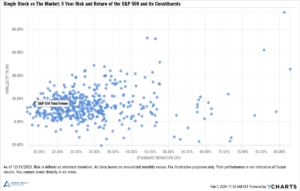Tax planning for a sudden liquidity event just got more complicated. If you’re expecting a big windfall from selling a business or employee stock options after an IPO or acquisition, you may be following the Build Back Better tax proposals. As currently drafted, the bill introduces new taxes on high earners, including those experiencing a one-time windfall. It also would modify some existing tax laws which would increase tax for affected individuals.
There is good news though. First, nothing is law yet. Second, the proposal has shrunk with each iteration. For example, the current proposal (last updated 11/4/2021) would not increase the ordinary income tax brackets or the capital gains tax brackets.
Tax planning for a windfall: what you need to know about possible tax law changes
Provisions in the Build Back Better plan that may affect people going through a sudden wealth event:
- 5%-8% surtax on high earners
- 5% surtax on taxpayers with an adjusted gross income (AGI) above $10M. The tax would be assessed only on income above $10M.
- Additional 3% surtax on taxpayers with an AGI above $25M. The total surtax for individuals with income above $25M would be 8%.
- The tax would be effective starting in 2022.
- Qualified Small Business Stock (Section 1202) tax benefits cut in half
- Under current law, eligible taxpayers may exclude between 50% and 100% of the capital gain from the sale of certain qualified small business stock from federal tax. The Build Back Better proposal would limit the exclusion to 50% for individuals with taxable income over $400,000.
- The change would apply to transactions dating back to September 13, 2021, subject to a binding contract exception.
- Broader application of 3.8% net investment income tax
- Under current law, the 3.8% net investment income tax (NII) applies only to passive investment income (such as interest, dividends, and capital gains from stock sales). As such, business owners are currently exempt from the tax on pass-through income. The proposal would repeal the exemption starting in 2022 for taxpayers earning more than $400,000 annually ($500,000 for married filing jointly).
Tax planning for a windfall
What can you do to reduce tax in light of the proposed changes? Depending on your situation, maybe nothing. However, *if* enacted as currently proposed above, here are a few considerations.
The surtax
If you are working on a diversification strategy for stock options after an IPO, SPAC, or direct listing, you may wish to consider a structure to keep taxable income below the surtax triggers. The surtax would increase the top capital gains tax rate to 31.8% and raise the top marginal tax bracket for ordinary income to 45%. And that’s just federal tax! If you’re subject to California’s highest tax rate in 2021, your combined marginal tax bracket would be 58.3%.
Have restricted stock units instead? You typically can’t control the recognition of ordinary income with RSUs. Usually, at vesting, the entire market value is taxed as ordinary income. If you have double-trigger RSUs, the taxable event will be delayed until the second trigger is met, usually an IPO or other liquidity event.
If you have stock or options in a company that’s being acquired, you may – or may not – be able to control when income is recognized. In a cash purchase, you’ll receive cash when the deal closes. There aren’t usually a lot of ways to plan for it. Deals structure varies also: cash and/or rollover equity (which can be tax free or taxable).
Equity compensation can also receive accelerated vesting and cashed out, converted to equity in the new company, or cancelled. There are a lot of variables. And even if you’re leading negotiations, there are probably a number of stakeholders, both internal and external.
Selling a small business or privately-held company? You may consider an installment sale to spread the gain over several tax years. But that also means you don’t have the cash now. Further, there’s always the risk the new owners can’t pay you. If you’re currently in the process of selling the company, consider the pros and cons of closing before 12/31.
Section 1202: Qualified Small Business Stock (QSBS)
While a complete discussion of IRS Section 1202 is outside the scope of this article, in general, a taxpayer may be eligible for a QSBS capital gain exclusion if:
- Stock was acquired at original issuance on/after 8/11/1993 from a domestic C Corporation
- At any time before and right after issuance, the company’s gross assets can’t exceed $50M
- The stock must be held for at least 5 years (if you have stock options, your exercise date is the date you acquire the stock)
- There are several other requirements to be aware of, including the requirement for the company to be in ‘qualified trades or businesses’
Determining the gain exclusion on QSBS-eligible stock (under current law):
- The gain from the sale of QSBS stock acquired on/after Aug. 11, 1993 is eligible for a 50% exclusion
- Stock acquired from Feb. 18, 2009 to Sept. 27, 2010 is eligible for a 75% gain exclusion
- Stock acquired on/after Sept. 28, 2010 is eligible for a 100% gain exclusion
- Using the dates above and prior to any Build Back Better changes, the excludable gain is limited to the greater of $10 million or 10 times the basis in the stock.¹
If the law is passed as legislated, the exclusion percentage would be limited to 50% for individuals with taxable income over $400,000. This would also apply to Section 1045 ‘rollovers’ of QSBS. (Again, a complete discussion is outside the scope of this article).
Since this part of the proposal would be retroactive to sales after September 13, 2021, planning opportunities may be limited as many major windfall is highly likely to trip the income thresholds.
However, as we await final word on tax law changes, consult a CPA or tax attorney to discuss your situation and the state tax implications. Not all states follow the federal QSBS tax treatments. For example, Massachusetts has its own qualified small business stock gain exclusion with different rules.
3.8% net investment income tax on pass-through business income
For business owners, the proposal should factor into your tax planning projections and estimates for net income. If you are already planning the sale of your business, closing before year end may have pros and cons.
The change, if enacted, would apply to taxpayers earning more than $400,000 annually ($500,000 for married filing jointly). Another change: net operating losses would no longer be a factor when calculating net investment income.
If a bill becomes law, any planning opportunities will begin to emerge once the full details are available.
Don’t ignore the risks of chasing tax savings
Deferring gains usually requires taking risk. Without some risk (the value of the stock, risk of forfeiture, etc.), there’s typically no tax deferral. As you weigh different scenarios, don’t discount the impact of continued investment risk.
Here’s a quick example:
Assume you estimate recognizing a gain next year (vs this year) reduces your average tax rate by 5%. So instead of a 25% average effective tax rate this year, you’ll pay 20% next year. If you have a $5M taxable gain, the tax savings is $250,000 (20%), provided the stock price is the same year over year. You decide to wait.
One year later, the stock is down -10% and currently worth $4.5M. You’re in a 20% average tax bracket and sell the stock. You pay $350,000 less in tax compared to if you sold the year before (28% tax savings)!
Unfortunately, in this case, you would have preferred to pay more tax than you did. By waiting, your after-tax windfall was $150,000 less than if you sold the year before.
Making big moves just for tax reasons generally isn’t advisable. After all, there’s a non-zero probability Congress doesn’t get anything done.
Footnotes and disclosure
¹ Section 1202 gain exclusion limitation (per issuer) for the taxable year shall not exceed the greater of (from the American Bar Association):
- $10 million reduced by any amount the taxpayer excluded from sales or exchanges of QSBS from the same issuer in prior years, or
- 10 times the aggregate adjusted basis of the QSBS issued by the corporation disposed of by the taxpayer during the taxable year, as measured on the original issue date
This is a general communication and should not be misinterpreted as personalized advice of any kind or used as the basis for making any type of tax, financial, legal, or investment decision. Contact a tax advisor to discuss your personal situation.











